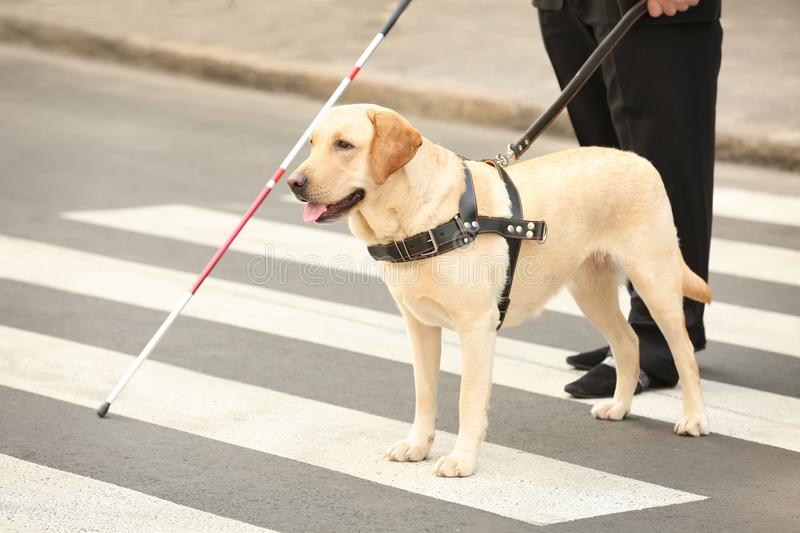Have you wondered about getting a guide dog? It’s not a simple decision, and it isn’t for everyone. Here are some facts to know about guide dogs, including tips for deciding if having one is right for you, and how to get one.
Generally, to apply for a dog, an individual must be legally blind (see definition below) and demonstrate their need for a guide dog to help them remain safe and effective in their everyday travel. Organizations often look for clients that already independently travel practical and purposeful routes with canes or other devices.
Individuals getting dogs go through trainings on campuses of guide dog organizations or in their own neighborhoods depending on the organization providing them. Two organizations Ensight often refers to include the Guide Dog Foundation in Smithtown, New York, and Leader Dogs for the Blind in Rochester Hills, Michigan. The Foundation provides onsite (and near campus) training for two weeks and Leader Dogs offers personalized programs on and off campus.
The Guide Dog Foundation notes, “The decision to work with a guide dog is a transformational event that extends into every area of a handler’s life. It’s crucial that each student is teamed with a dog that best suits that person’s mobility, personality, lifestyle, and physical needs. As each applicant is accepted to our training program, we carefully match and train a dog that’s right for them.”
An article through the Tyler Lighthouse and a video from Leader Dogs may be helpful for deciding if a guide dog is right for you: Concerns include your level of orientation and mobility skills, need to visit places you may not feel safe traveling with the cane only, whether or not you are comfortable with more visibility and an increase in social interactions, and willingness and readiness to provide the daily care and attention a dog will need.
Most guide dog organizations provide training and other services free of charge through support from donors and volunteers. For more information, visit
American Council of the Blind Guide Dog Resources
Definition of “legally blind” from webmd.com:
The government uses the term “legal blindness” to decide who can get certain benefits, like disability or job training. It is not the same as being totally blind.
If you’re completely blind, you can’t see any light or form. Of the people with eye disorders, only about 15% can see nothing at all. If you’re legally blind, you can still see — just not that clearly.
Normal vision is 20/20. That means you can clearly see an object 20 feet away. If you’re legally blind, your vision is 20/200 or less in your better eye or your field of vision is less than 20 degrees. That means if an object is 200 feet away, you have to stand 20 feet from it in order to see it clearly. But a person with normal vision can stand 200 feet away and see that object perfectly.
